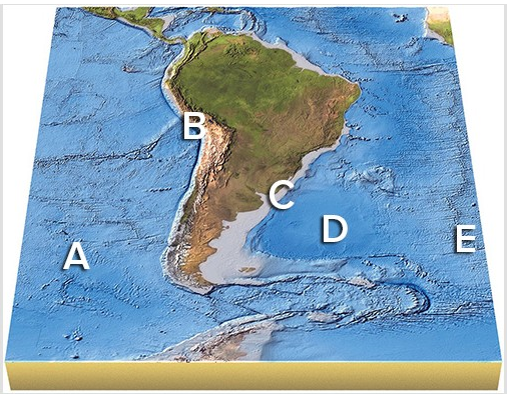At which of the following temperatures does the Earth radiate energy at the greatest rate or intensity?
A. -40°C
B. 32°C
C. 60°C
D. 105°C
Answer: D
You might also like to view...
An electrical device that is "grounded" has
A. no potential difference between it and the ground. B. an infinite potential difference between it and the ground. C. low voltage. D. a firm connection to the ground.
Explain the formation of the narrow, triangle-shaped lake just to the east of Westgaard Cemetery (in the NE ¼ of Section 3). You may use a sketch to illustrate your answer.
The following questions are based on Map T-4, a portion of the “Voltaire, North Dakota” quadrangle (scale 1:24,000; contour interval 5 feet) and Figure 40-4, a stereogram of the same region showing the Souris River (48°06'23"N, 100°48'05"W). What will be an ideal response?
On this map of South America, which features are not on a plate boundary?

A) A and B
B) B and C
C) C and D
D) D and E
E) All of the features are on a plate boundary.
Devils Tower was formed by
A. accumulations of windblown sand. B. solidification of a magma chamber. C. sedimentation from river deposits.